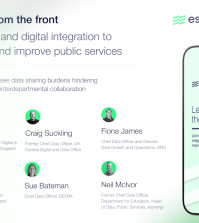Helping governments bridge the gap between intentions and performance

The ideal of good government is one shared by billions of people around the world but more needs to be done for it to become a reality, says Adrian Brown
You work in government, as I did too not so long ago. When I was working in 10 Downing Street I always saw it as an enormous privilege but at the same time was aware that government often didn’t work as well as it could.
Certainly, government’s portrayal in the media – broadcast, print and social – is more often negative than positive. For citizens, this means that even if their own personal experience is good, they’re far more likely to read or hear about a government mistake than a success. Yet from GPS and smart phone touchscreens to new schools opening in Afghanistan to the global eradication of polio, governments’ achievements are as diverse as they are extensive. So, what’s the problem?
It’s important to note at the outset that there is no shortage of high-quality ideas – not surprising when the opportunity to do good and change lives for the better is what has attracted generations of the best and brightest into public service. But while a proposal can sound great on paper, a failure to think about the outcomes early enough is all too common.
This leads to frustration – especially among citizens, who rightly have high expectations about the services their hard-earned taxes should be providing. This frustration can build and, in time, threaten our democratic fabric – which is why improving public impact is one of the greatest challenges of the 21st century.
The Public Impact Observatory: observing the good governments can do
It’s not all bad news. There remain plenty of examples of governments performing strongly and citizens benefiting as a result. In Finland, for example, education reforms between 1945 and the 1980s have led to improved education outcomes for well over one million children. And Zambia’s maternal mortality rate – once one of the highest in the world – has fallen by 53% since the 2012 launch of the public-private partnership Saving Mothers, Giving Life.
These examples, and more than 200 others, can be found in the Public Impact Observatory, a free database accessible via the Centre for Public Impact’s website, which evaluates the success of policies across the world in delivering public impact and provides real-life examples of governments succeeding in strengthening citizen outcomes. We hope that the Observatory will prove to be an invaluable resource for anyone interested in the study of public impact and how governments can improve their performance. In one place there are hundreds of stories of public impact, good and bad, excellent and disappointing.
Such stories help demonstrate that from lawmaking to regulation, monetary or tax policy to direct investment, governments’ power to influence citizen outcomes remains significant. And it is not just national governments that have a part to play. From country leaders to local government officials, all public servants have a role in creating public impact.
Getting the fundamentals right
To help them in this quest, the Centre for Public Impact has published the Public Impact Fundamentals – a free tool for governments underpinned by cutting-edge thinking from academia and tested by government officials so that it can be immediately usable.
The Fundamentals are underpinned by three areas of focus for effective policy: Legitimacy, Policy and Action. Legitimacy – the underlying support for a policy and the attempts to achieve it; Policy – the design quality of policies intended to achieve impact; and Action – the translation of policies into real-world effect. Mutually reinforcing, they lead collectively to improved public impact.
Within each Fundamental are three elements, which collectively contribute to performance and lead to improved public impact. Each of the case studies in our Observatory are analysed and evaluated against the nine elements of the Public Impact Fundamentals. Each element is then given a rating on a four-point scale ranging from weak to strong.
The Fundamentals are a systematic attempt to understand what makes a successful policy outcome and describe what can be done to maximise the chances of achieving public impact. In developing them, we have worked closely with the most senior academics from the world’s leading public policy schools, as well as senior government officials from across the globe.
Towards a world of strengthened public impact
Although ours is a world in constant transition, the need for good results remains constant – megatrends and technological advances won’t change this. It is our hope that the Public Impact Fundamentals and the Public Impact Observatory will help guide and inspire governments to strengthen their performance and improve the lives of citizens around the world.
Now that’s an outcome worth fighting for.
Want to learn more about the Centre for Public Impact? Check out our website where you can subscribe to our newsletter and drop us a line. Come join the conversation.

















